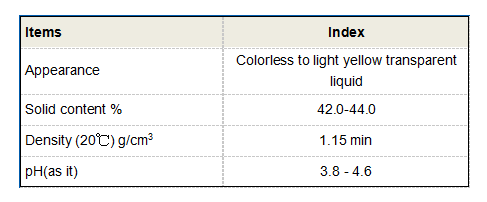scale and corrosion inhibitor for cooling tower
Scale and Corrosion Inhibitors for Cooling Towers
Cooling towers are essential components in many industrial processes, tasked with dissipating heat from machinery and equipment and maintaining optimal operational efficiency. However, the efficiency of cooling towers can be severely compromised by the twin problems of scale formation and corrosion. Understanding these issues and utilizing effective inhibitors is crucial for ensuring the longevity and performance of cooling systems.
Scale Formation in Cooling Towers
Scale formation primarily occurs when dissolved minerals, such as calcium, magnesium, and silica, precipitate out of water as the temperature rises in the cooling tower. As water evaporates, the concentration of these minerals increases, leading to deposits on the heat exchange surfaces and other internal components. Over time, scale buildup can severely restrict water flow, reduce heat transfer efficiency, and lead to increased energy consumption. In extreme cases, heavy scaling may cause mechanical failure and necessitate costly repairs or replacements.
To combat scale formation, operators often employ chemical scale inhibitors that can alter the properties of the mineral crystals. These inhibitors work by essentially modifying the way in which the minerals precipitate, preventing them from forming adherent deposits. Common chemical compounds used include phosphonates, polyacrylic acids, and various other chelating agents. Each type of inhibitor has its specific mode of action and suitability depending on the water chemistry, temperature, and typical operational conditions.
Corrosion in Cooling Towers
Corrosion is another significant issue that can plague cooling towers, resulting in equipment degradation and increased maintenance costs. Corrosive attacks can occur due to various factors, including low pH levels, high oxygen content, and the presence of aggressive ions in the water. Metals used in cooling tower construction, such as iron, copper, and aluminum, can corrode over time, leading to leaks and structural failure.
scale and corrosion inhibitor for cooling tower

To mitigate corrosion, operators implement corrosion inhibitors that can protect metal surfaces. These inhibitors generally function by forming a protective film on the material's surface, thus preventing direct contact between the water and the metal. Common corrosion inhibitors include azoles, phosphates, and molybdates, each providing a different mechanism of protection. The choice of inhibitor must be aligned with the metallurgy of the cooling system and the specific water chemistry to be effective.
Combined Treatment Approach
For optimal performance, a combined approach that addresses both scale and corrosion is often required. Many manufacturers produce products that offer dual-action capabilities, providing both scale prevention and corrosion protection. This streamlined approach not only simplifies treatment protocols but also enhances the overall effectiveness of the cooling system.
The formulation of such inhibitors requires careful consideration of various parameters, including pH, conductivity, and temperature of the circulating water. Regular monitoring of these parameters and the effectiveness of the inhibitors is essential. Operators can implement monitoring systems to track key indicators and adjust dosages as necessary, ensuring that both scale and corrosion are adequately managed.
Conclusion
In conclusion, scale and corrosion are two major challenges faced by cooling tower systems, impacting efficiency, reliability, and operational costs. By implementing appropriate scale and corrosion inhibitors, facilities can protect their equipment, reduce maintenance costs, and prolong the lifespan of their cooling systems. The use of dual-action inhibitors represents a sophisticated solution, allowing operators to tackle both issues simultaneously. Effective water treatment programs, alongside regular monitoring and maintenance practices, are essential for maximizing the performance and longevity of cooling tower operations. A proactive approach not only safeguards equipment but also contributes to more sustainable and efficient industrial practices.
-
Pbtc Scale InhibitorPBTC: A Scale Protector for Industrial Water TreatmentNewsAug.05,2025
-
Organic Phosphonate: An Efficient Defender in the Field of Scale InhibitionNewsAug.05,2025
-
Hydrolyzed Polymaleic Anhydride: Green Pioneer in Scale Inhibition FieldNewsAug.05,2025
-
PAPEMP Polyamino Polyether Methylene Phosphonic Acid For SaleNewsAug.05,2025
-
Flocculant Water Treatment: A Pioneer in Purification in the Field of Water TreatmentNewsAug.05,2025
-
Benzyl Isothiazolinone: An Efficient and Broad-Spectrum Antibacterial Protective GuardNewsAug.05,2025





